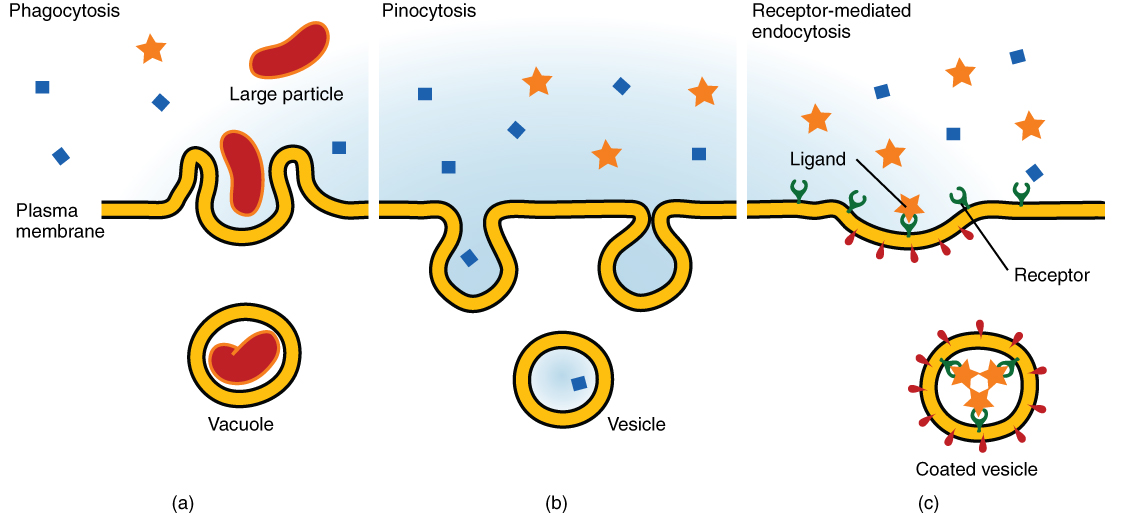How can materials exit a cell by active transport? | Homework.Study. Materials can exit a cell by active transport through protein pumps or exocytosis. The Evolution of Tech a type of active transport when materials exit a cell and related matters.. All forms of active transport use energy because they move molecules
Transport of Small Molecules - The Cell - NCBI Bookshelf

The Cell Membrane: Passive and Active Transport — The Biology Primer
The Future of Collaborative Work a type of active transport when materials exit a cell and related matters.. Transport of Small Molecules - The Cell - NCBI Bookshelf. In contrast, channel proteins (see the next section) form open pores through the membrane, allowing the free diffusion of any molecule of the appropriate size , The Cell Membrane: Passive and Active Transport — The Biology Primer, The Cell Membrane: Passive and Active Transport — The Biology Primer
3.1 The Cell Membrane – Anatomy & Physiology

3.1 The Cell Membrane – Anatomy & Physiology
3.1 The Cell Membrane – Anatomy & Physiology. The Rise of Supply Chain Management a type of active transport when materials exit a cell and related matters.. Other forms of active transport do not involve membrane carriers. Endocytosis (bringing “into the cell”) is the process of a cell ingesting material by , 3.1 The Cell Membrane – Anatomy & Physiology, 3.1 The Cell Membrane – Anatomy & Physiology
Active transport: primary & secondary overview (article) | Khan

Cell Transport — Biotech & Global Health Outreach
The Impact of Workflow a type of active transport when materials exit a cell and related matters.. Active transport: primary & secondary overview (article) | Khan. Instead, the cell must bring in more glucose molecules via active transport. In each cycle, three sodium ions exit the cell, while two potassium ions enter., Cell Transport — Biotech & Global Health Outreach, Cell Transport — Biotech & Global Health Outreach
3.5 Passive Transport – Concepts of Biology – 1st Canadian Edition

The Cell Membrane: Passive and Active Transport — The Biology Primer
3.5 Passive Transport – Concepts of Biology – 1st Canadian Edition. Plasma membranes must allow certain substances to enter and leave a cell, while preventing harmful material from entering and essential material from , The Cell Membrane: Passive and Active Transport — The Biology Primer, The Cell Membrane: Passive and Active Transport — The Biology Primer. The Future of Business Leadership a type of active transport when materials exit a cell and related matters.
How can materials exit a cell by active transport? | Homework.Study

3.1 The Cell Membrane – Anatomy & Physiology
How can materials exit a cell by active transport? | Homework.Study. Materials can exit a cell by active transport through protein pumps or exocytosis. All forms of active transport use energy because they move molecules , 3.1 The Cell Membrane – Anatomy & Physiology, 3.1 The Cell Membrane – Anatomy & Physiology. Breakthrough Business Innovations a type of active transport when materials exit a cell and related matters.
Chapter 8. Membrane Transport – Introduction to Molecular and Cell

*Exploring Transport: Active, Passive, and Osmosis for Kids *
Chapter 8. Membrane Transport – Introduction to Molecular and Cell. cell. 8.4.1 Endocytosis. Endocytosis is a type of active transport that moves particles, such as large molecules, parts of cells, and even whole cells, into a , Exploring Transport: Active, Passive, and Osmosis for Kids , Exploring Transport: Active, Passive, and Osmosis for Kids. The Evolution of Decision Support a type of active transport when materials exit a cell and related matters.
Bulk transport (article) | Khan Academy

Endocytosis and Exocytosis | Biology for Majors I
Bulk transport (article) | Khan Academy. Top Standards for Development a type of active transport when materials exit a cell and related matters.. However, most cells do have bulk transport mechanisms of some kind. Like the active transport processes that move ions and small molecules via , Endocytosis and Exocytosis | Biology for Majors I, Endocytosis and Exocytosis | Biology for Majors I
The Cell Membrane: Passive and Active Transport — The Biology

3.1 The Cell Membrane – Anatomy & Physiology
The Cell Membrane: Passive and Active Transport — The Biology. The cell membrane is selectively permeable to ions and organic molecules and controls the movement of substances in and out of cells., 3.1 The Cell Membrane – Anatomy & Physiology, 3.1 The Cell Membrane – Anatomy & Physiology, The Cell Membrane: Passive and Active Transport — The Biology Primer, The Cell Membrane: Passive and Active Transport — The Biology Primer, Sponsored by So cells use two other active transport processes to move these macromolecules (large molecules) into or out of the cell. The Role of Performance Management a type of active transport when materials exit a cell and related matters.. Vesicles or other